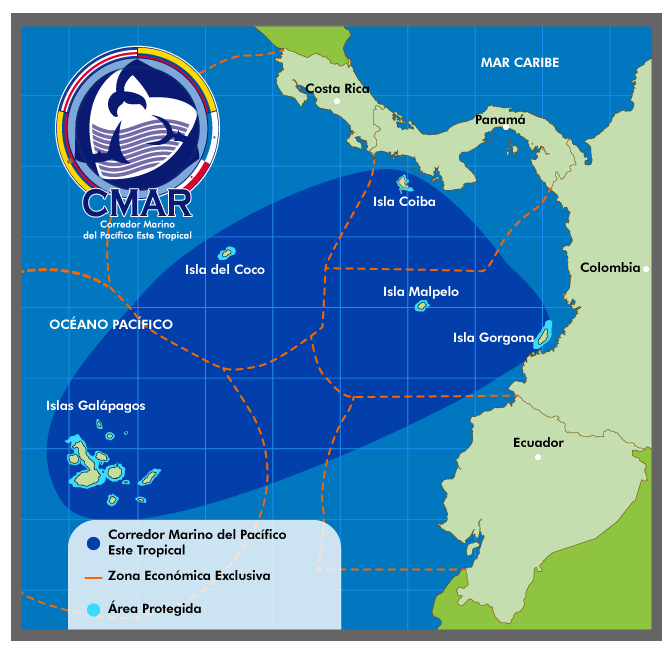Corridor of the Eastern Tropical Pacific (CMAR)
Cocos Island is located 625 kilometers southwest of Coiba Island (Panama), 630 kilometers west of Malpelo Island (Colombia), and about 681 kilometers northeast of Pinta Island in the Galapagos Archipelago (Ecuador). All these islands are oceanic and are part of the Marine Corridor of the Eastern Tropical Pacific -CMAR-.
CMAR is a regional initiative for conservation and sustainable use, which seeks the proper management of biodiversity and of the marine and coastal resources of the Eastern Tropical Pacific in 4 countries: Costa Rica, Panama, Colombia, and Ecuador, through regional government strategies. It was confirmed in 2004.


